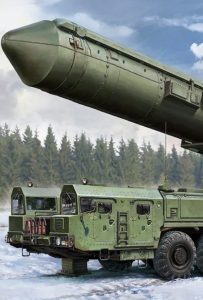
Japan to accelerate the development of underwater drones to defend against China
Japan is ramping up the development of unmanned underwater vehicles to strengthen security at sea due to China’s increased military presence.
This is stated in the revised draft of the Japanese government’s five-year ocean policy, Kyodo News reports.
In the new version of the draft, the government emphasized that China’s rise has rapidly changed the military balance in the Indo-Pacific region.
They primarily see the danger from the side of China. This is due to the fact that Chinese coast guard ships have repeatedly entered the Japanese territorial waters of the East China Sea.

Relations between Japan and China have often been strained over the Tokyo-controlled Senkaku Islands, which Beijing claims and calls Diaoyu.
Tokyo fears that China is conducting joint military exercises with Russia in nearby waters. This puts Japan’s national interests at risk.
Thus, the ocean policy strategy emphasizes that Japan will accelerate the research and development of autonomous underwater vehicles and remotely operated vehicles for surveillance and resource exploration activities.
The draft also assumes the government to develop legislation that will enable offshore wind power generators to be installed within Japan’s exclusive economic zone.
In addition, measures will be taken to enhance rescue capabilities for rapid response to maritime accidents.
The Basic Plan on Ocean Policy was first developed in 2008 and has been revised every five years.
At the beginning of April, the design of the new extra-large unmanned underwater vehicle of the XLUUV project was first presented in Japan.

It has a modular design, so the size of a specific sample depends on the dimensions of the payload.
The length of the base module is 10 meters, and the estimated length of the device with the mission module will exceed 15 meters. The diameter is 1.8 meters.
Mitsubishi Heavy Industries (MHI) became the general contractor of the project.

The key features of the XLUUV will include:
- deployment in a distant sea area without surface ship support available;
- adaptability to a wide range of tasks, such as anti-submarine defense, mine countermeasures, reconnaissance, electronic warfare, etc.
SUPPORT MILITARNYI
Even a single donation or a $1 subscription will help us contnue working and developing. Fund independent military media and have access to credible information.


 Вероніка Грищенко
Вероніка Грищенко 
 Андрій Соколов
Андрій Соколов 
 Urich
Urich 
 Андрій Харук
Андрій Харук 
 Контужений Безпілотник
Контужений Безпілотник 

 Центр ініціатив ПЖ
Центр ініціатив ПЖ 



 Vadim Kushnikov
Vadim Kushnikov 
 Андрій Тарасенко
Андрій Тарасенко 
 Юрій Юзич
Юрій Юзич 




